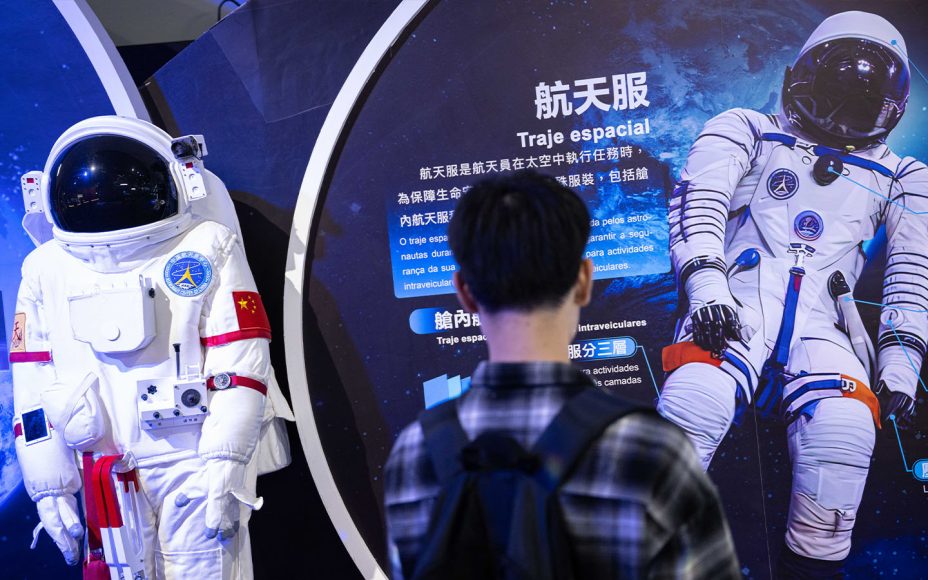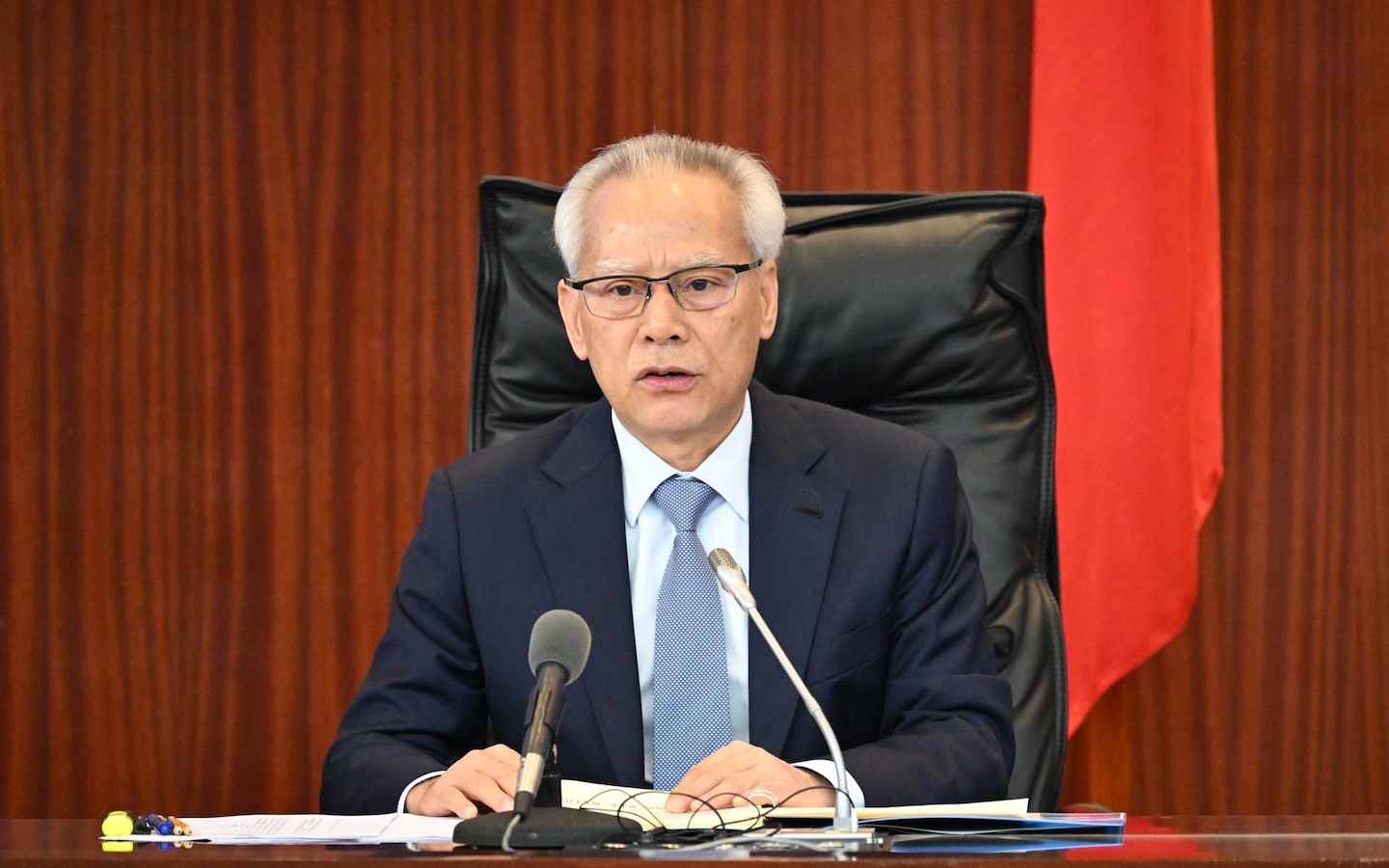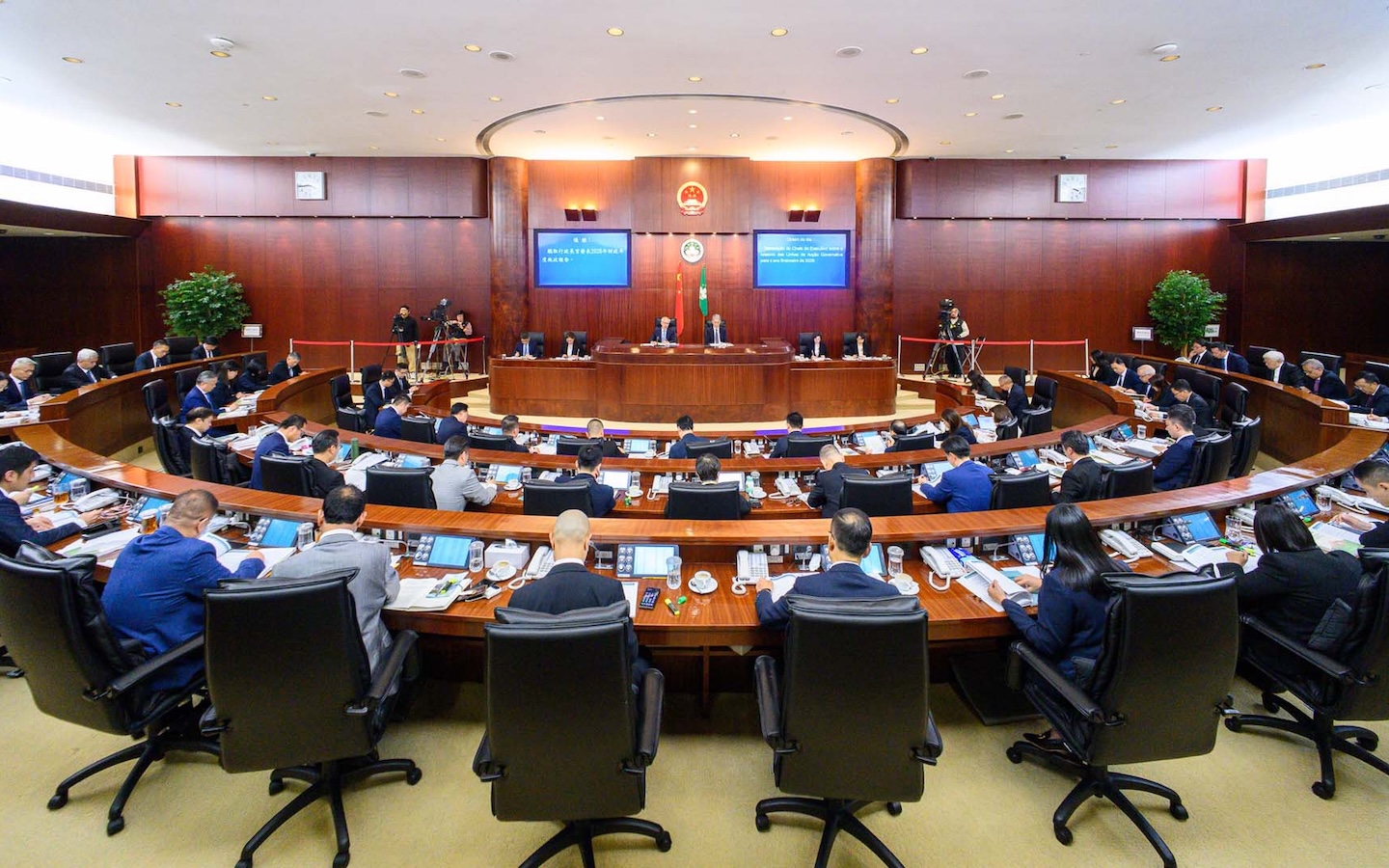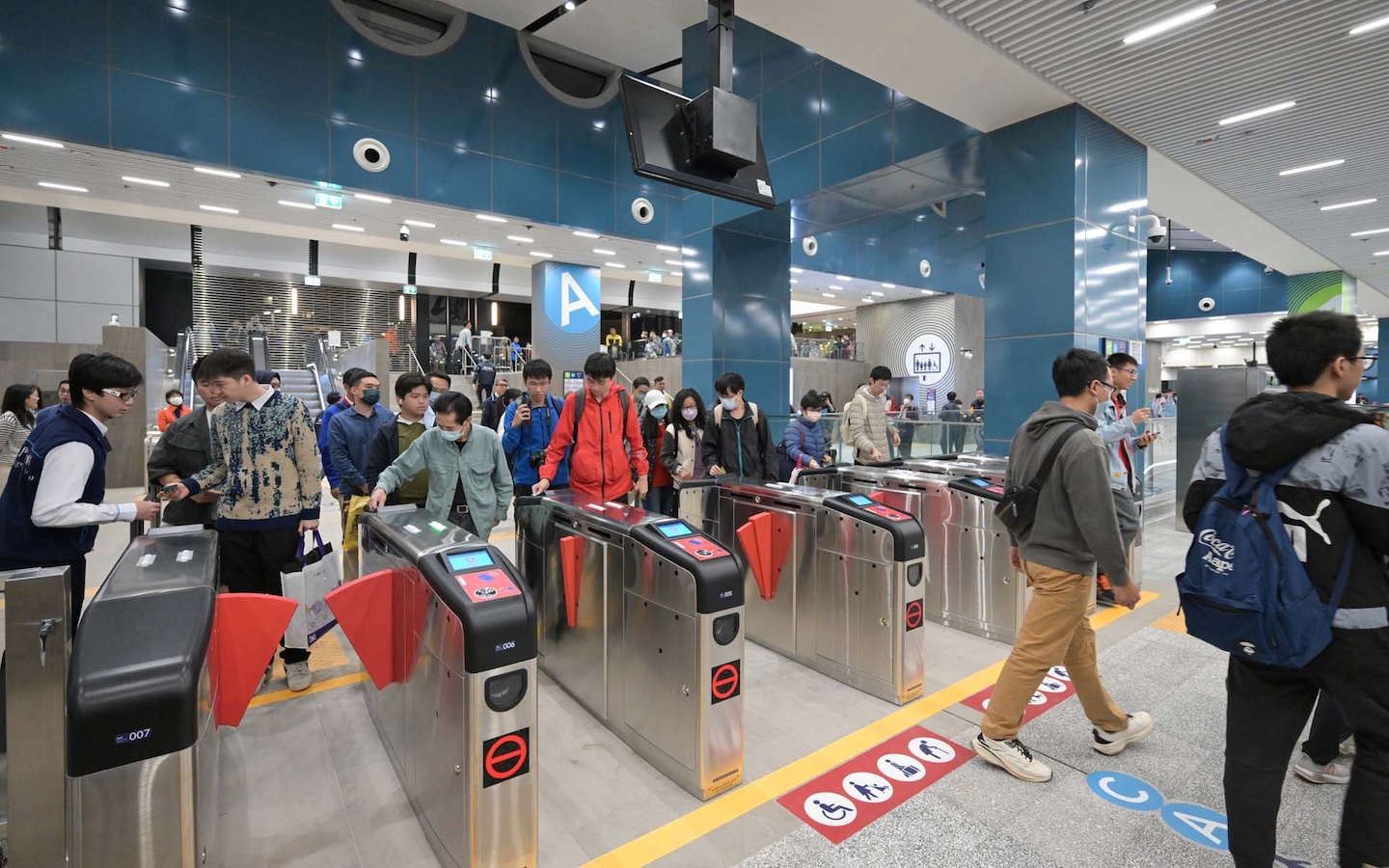Astronauts from China’s manned space programme visited Macao in December, sharing inspirational insights into the country’s endeavours in the cosmos. The spacefarers Zhang Lu, Liu Boming, Chen Dong and Wang Yaping – all of whom have travelled aboard Shenzhou spacecraft – detailed the latest advances in China’s space station construction, its manned lunar missions, and the day-to-day experiences of living in orbit.
The China Manned Space Agency (CMSA) delegation spent three days in Macao. During that time, the astronauts held a lecture for 400 local secondary school and university students at the Forum Macao Complex in Nam Van. There, they briefed their audience about life in space and the challenges of being an astronaut.
Shenzhou-10 and Shenzhou-13 astronaut Wang Yaping is well known in Macao for being just the second Chinese woman in space, but also because she has given talks in the city twice in the past decade. She told the audience she was thrilled to know that some students who attended her previous lectures were now engaged in space missions. Wang said she enjoyed “sharing the beauties and wonders” of space with people.
Shenzhou-15 astronaut Zhang Lu, meanwhile, shared details of arduous training regimes in a spacesuit that (combined with his own body weight) weighed more than 200 kilograms. He also described going up to 10 hours without food on missions outside of the spacecraft, floating in orbit. Zhang said that, despite the physical discomforts of space exploration, students with a passion for the universe beyond Earth would find joining China’s space programme highly rewarding.
A third astronaut, Liu Boming of Shenzhou-7 and Shenzhou-12, said that space missions generally went smoothly because crews were well prepared. “Remote monitoring and control from the ground are also important,” he added.
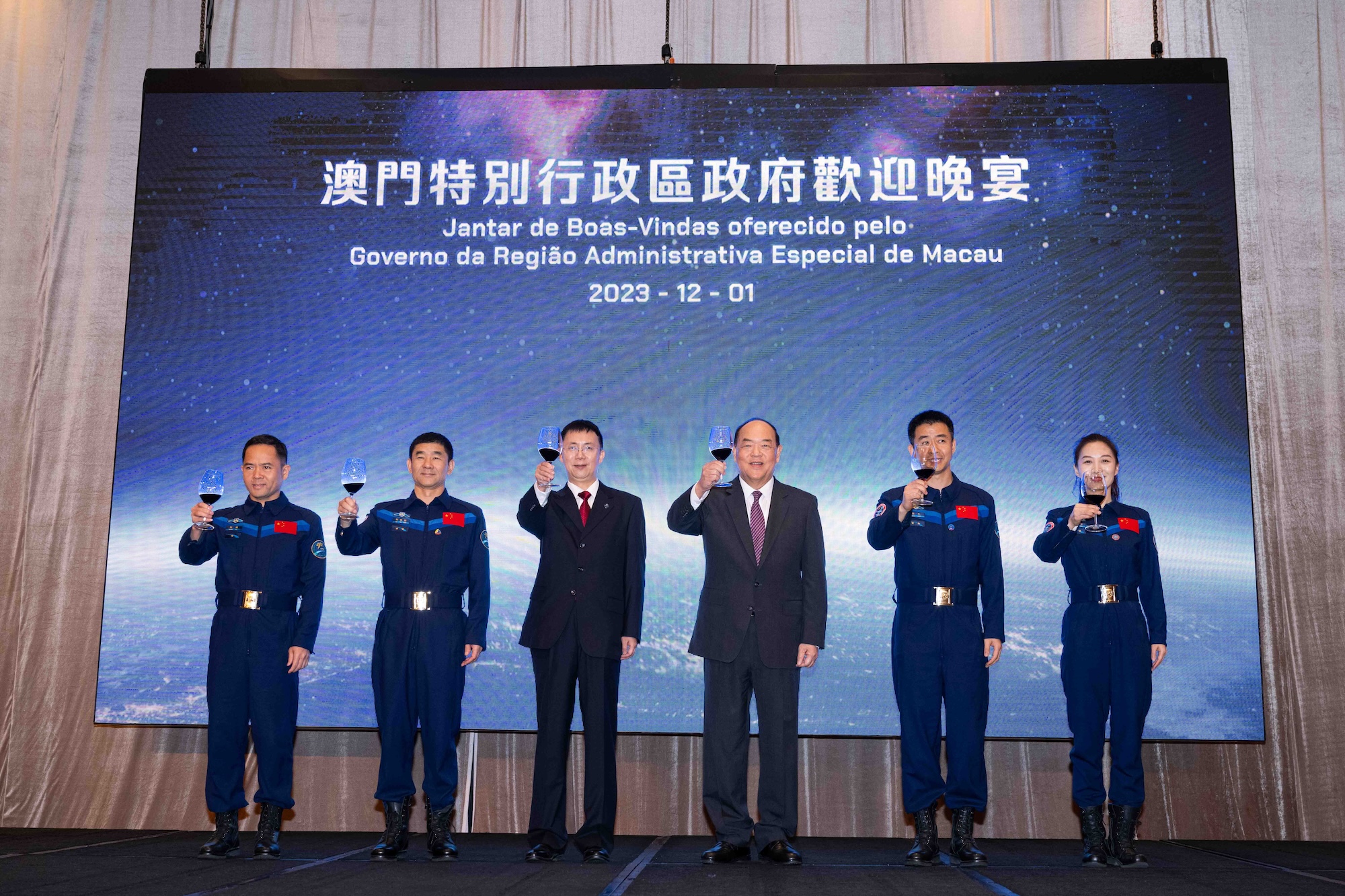
CMSA Deputy Director Lin Xiqiang, who headed the delegation, told the students that astronauts needed to be physically and mentally fit, possess incredible amounts of professional knowledge and always be able to control their emotions. He said that anyone dreaming of a career in the cosmos must study hard and do more exercise.
The delegation also visited the Macao Science Center during their three days in the city. There, Lin said the astronauts were “deeply impressed by the enthusiasm of Macao compatriots for the nation’s manned space flight projects, especially youngsters’ curiosity about [our country’s] astronauts.”
At the end of the visit, Lin said he hoped more people from Macao would feature in China’s space projects – including the country’s first moon landing, which the CMSA aims to carry out by 2030. “We hope that the visit will reinforce Macao compatriots’ understanding of the nation’s manned space projects, so that local youth would further enhance their interest in exploring scientific knowledge and space engineering” he said.

At a welcome ceremony for the astronauts, Chief Executive Ho Iat Seng said their visit meant a lot to Macao’s science education. He said it showed support for local youth, inspiring them to study science and technology subjects that could someday lead to space missions of their own.
“[The delegation] encourages Macao’s higher education institutions, several state key laboratories and the Science Center to maximise synergy among themselves, in order to actively contribute to the training of qualified personnel in the scientific and technological field,” he noted.
‘Macao Science 1’ satellites officially put into use
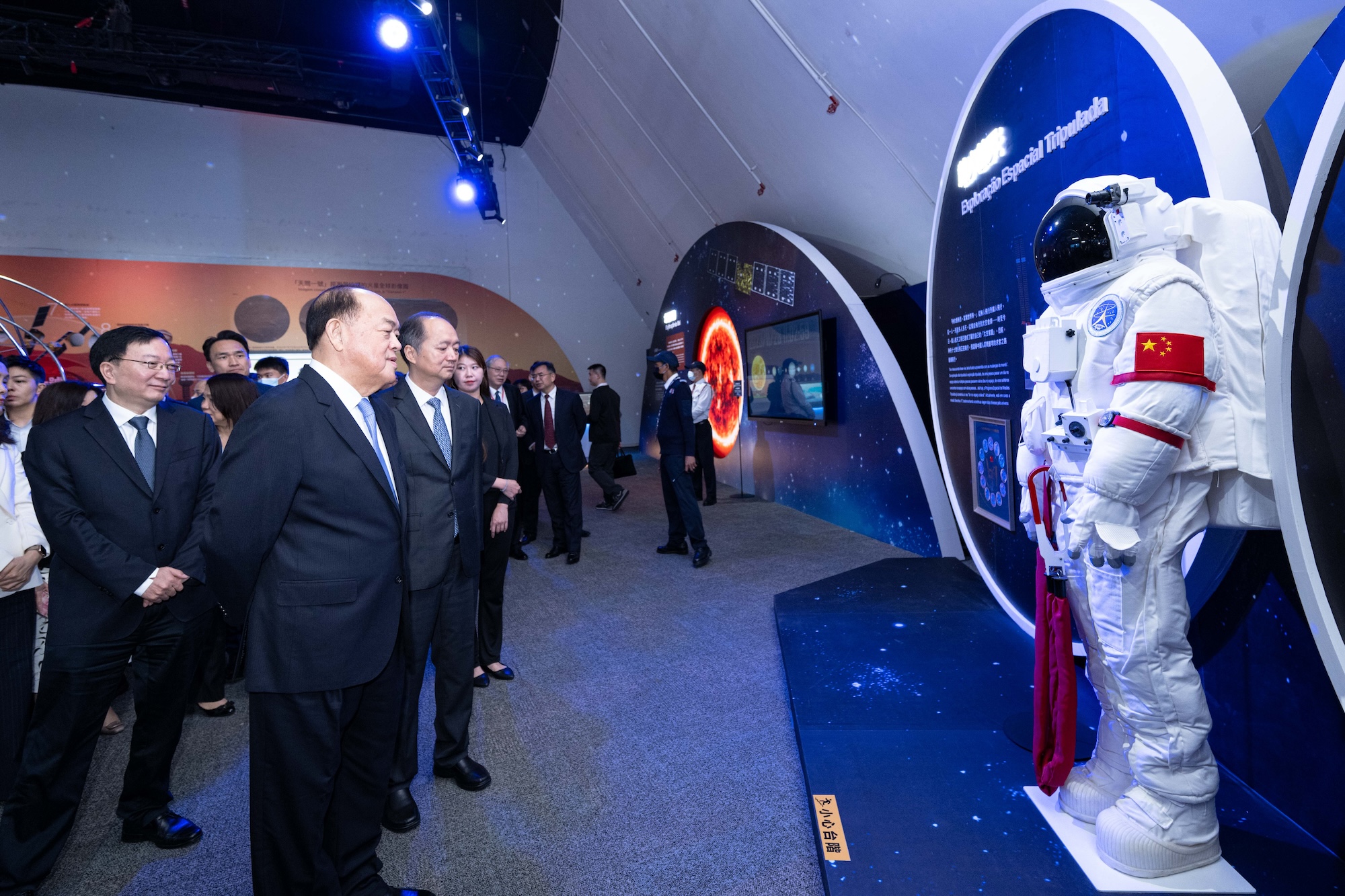
Macao has already made contributions to China’s space programme, of course. A week before the astronauts’ arrival, two Macao Science 1 space exploration satellites were declared fully operational. Jointly developed by the mainland and Macao, the satellites are now in orbit where they monitor the geomagnetic field and space environment of the South Atlantic Anomaly (SAA).
The SAA is a shape-shifting region where the Earth’s magnetic field is at its weakest. Li Guoping, chief engineer for the China National Space Administration, has described the Macao Science 1 satellites as the first exploration satellites in the world focused on observing the anomaly. There are high hopes for the satellites, which are considered a boon for both Macao and the mainland’s space programme.
“The satellites will boost Macao’s scientific and technological innovations, help with the transformation of Macao’s economic and social development models, break new ground for scientific and technological cooperation between the mainland and Macao, and set new examples for scientific and technological development in the Guangdong-Hong Kong-Macao Greater Bay Area,” Li has explained.
The mission uses a twin-satellite approach, in which Satellite A carries payloads like high-precision vector magnetometers and standard-scale magnetometers to detect the earth’s magnetic field. Satellite B includes high-energy particle detectors and solar X-ray instruments to obtain data on the space environment, such as solar radiation and high-energy particles, that serve the ends of geomagnetic field detection.
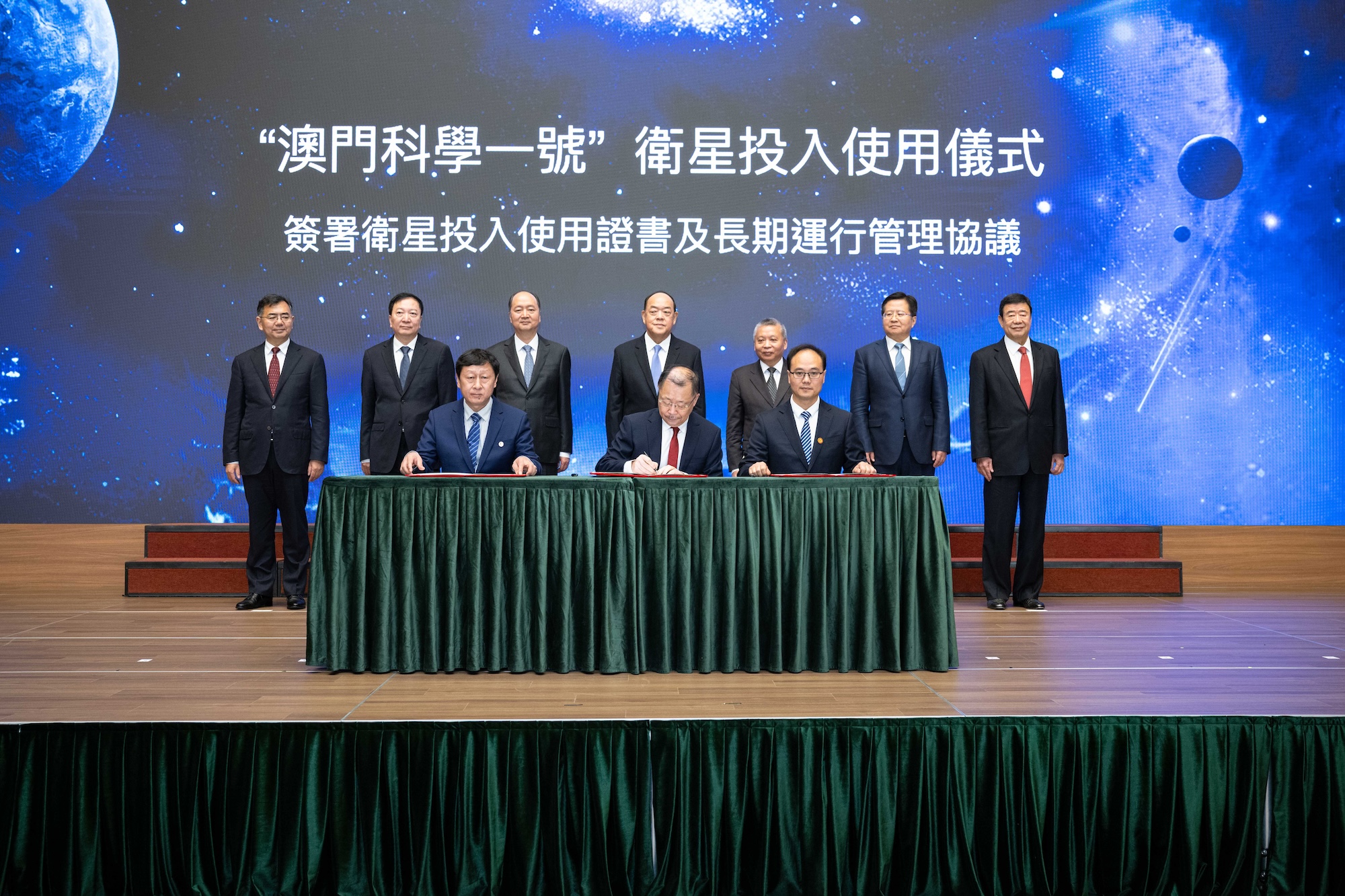
Launched in May last year, from northwest China’s Jiuquan Satellite Launch Center, the satellites provide valuable data on high-precision changes of the geomagnetic field in low altitudes.
The satellites’ platforms were manufactured by the China Aerospace Science and Technology Corporation and China’s Northwestern Polytechnical University, while the scientific instruments on both satellites were provided by Macau University of Science and Technology.
A ceremony marking the satellite’s official deployment coincided with an exhibition of China’s achievements in space exploration in late November, at the Macao Science Center. There, lunar soil was put on display in Macao for the first time.
At that ceremony, the director of Macao’s Economic and Technological Development Bureau, Tai Kin Ip, expressed his belief that scientists from Macao and the mainland would continue working together on Macao Science 1-related projects as well as to nurture space talent.
